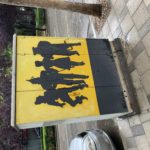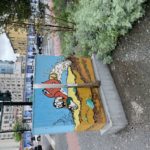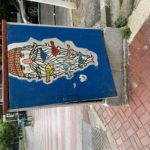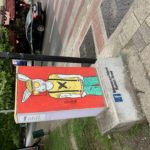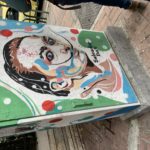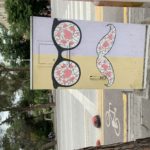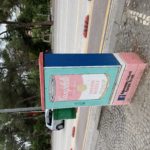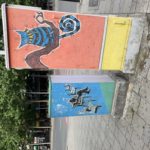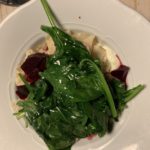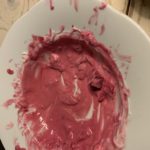Two Days in Tirana: Getting to Know Albania’s Funky Capital
Two Days in Tirana: Getting to Know Albania’s Funky Capital
There are some cities that I just can’t help but fall in love with super quickly, and Tirana, Albania was one of those cities. It may seem an odd choice, considering few have even heard of Albania, and if they have heard of it, they associate it with communism. Fair, but Albania and its capital city of Tirana have evolved into so much more than that. Tirana is a city of vibrant culture, a dark and interesting past, and fascinating and affordable opportunities for visitors. Here are some of the reasons I now adore Tirana.
The Street Art
One of the first things I was drawn in by in Tirana was the street art. More specifically, the painted electricity boxes. Practically every electricity box lining the streets of the city, and there are a lot, is painted with something different. These painted boxes add a lot of character to a city that was dominated by communism for so long. During the communist regime of Enver Hoxha (Hoe-juh), everything was grey and drab and individuality was squashed. Now, almost 30 years later, the city is bursting with color and life.
Traditional Food
Based on everything I read, the best restaurant in Tirana for traditional Albanian food is Oda, so I headed there for dinner on my first night in the city. The restaurant is cosy with low tables surrounded by plushy benches and decorations showcasing bits of Albanian history and culture.
I ordered the eggplant stuffed with veggies, but then my server offered to make me a half portion of that dish and another so that I could try two, so I got a taste of the eggplant and a pepper stuffed with seasoned rice. Both were delicious, and the meal with a soda only set me back around $6.

The cosy inside of Oda Restaurant
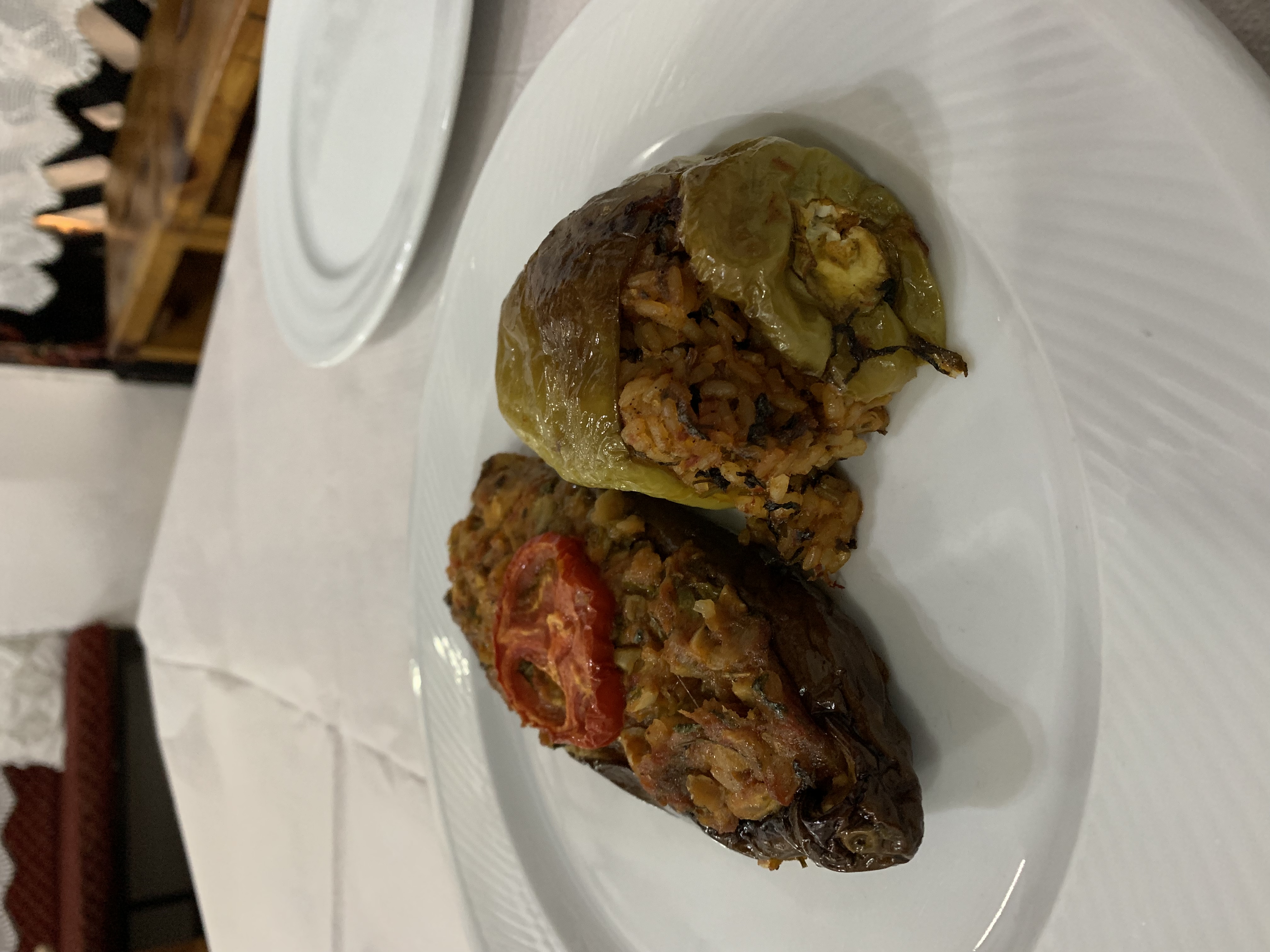
Traditional stuffed eggplant and stuffed pepper at Oda Restaurant Tirana
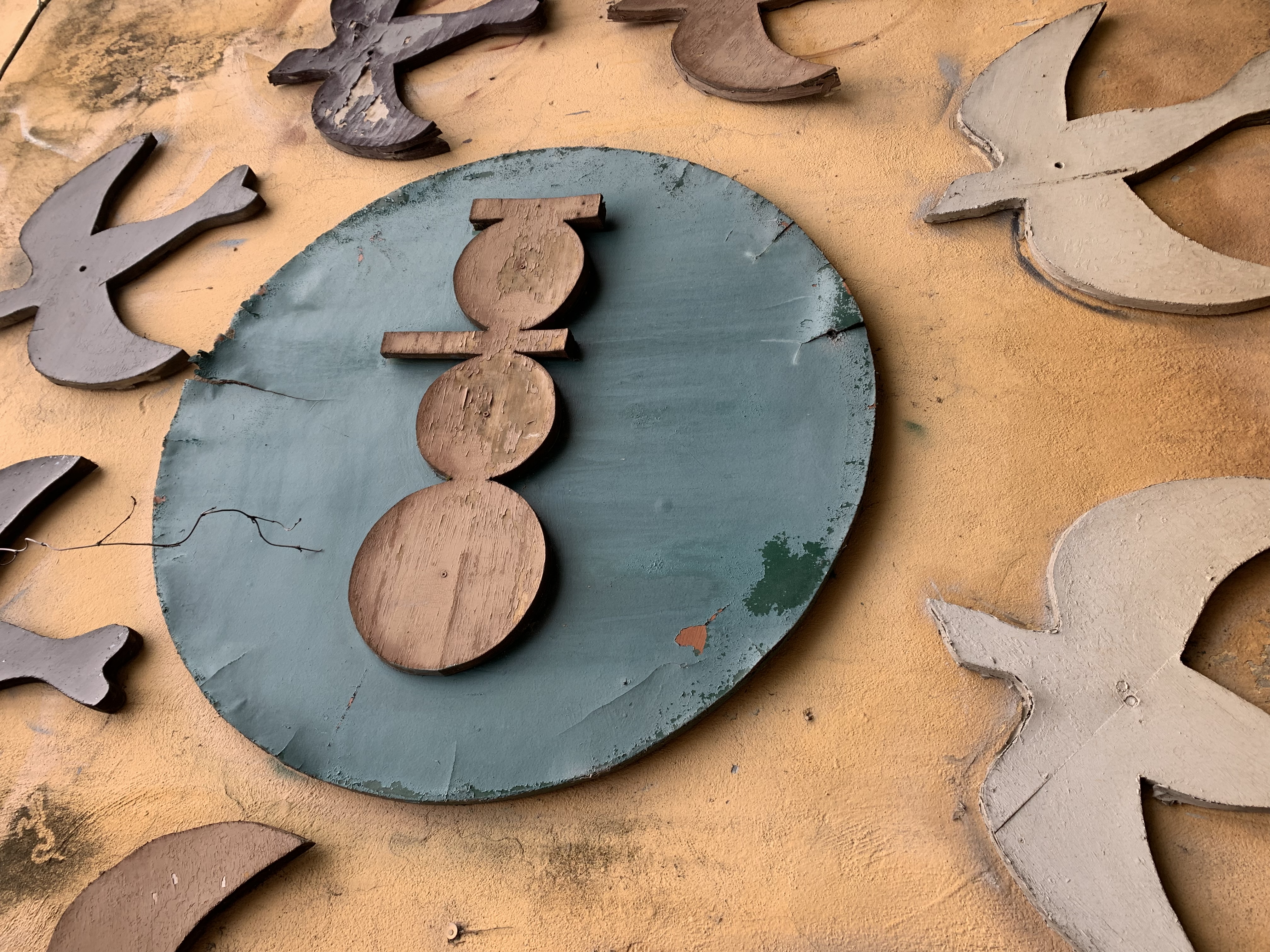
A Walking Tour of the City
On my first full day in Tirana, I took a free walking tour of the city. The tour starts every day in front of the Opera in the huge main square, Skanderbeg Square, at 10 am sharp. My guide, Eri, did a fantastic job of showing us the weird and compelling bits of Tirana, and I was super impressed with how he was able to concisely and clearly break down Albania’s communist past in ten minutes flat.
Having a Drink at the Sky Bar
I’m a sucker for good views, so I made my way up to the Sky Bar, a rotating bar that gives 360 views of Tirana. It was nice to sit back and relax with a fruit cocktail that only cost around $3 and enjoy the views.

Tirana below from the rotating Sky Bar
The Remarkable Museums
The National History Museum of Albania
This museum was the first thing I decided to check out in the city once I arrived there from Podgorica. The museum is huge and only costs 200 lek, which is about $1.80. There are tons of rooms filled with artifacts spanning from the late Paleolithic period to modern day. It is split up into large pavilions each dedicated to an era of Albanian history. Most of the pavilions have information that is also translated well into English. Unfortunately, the pavilions dedicated to the communist period and Mother Teresa are lacking translations – I think they are making their way through the museum with translations and haven’t gotten there yet. Nevertheless, the museum is interesting and is a valuable place to visit in Tirana.
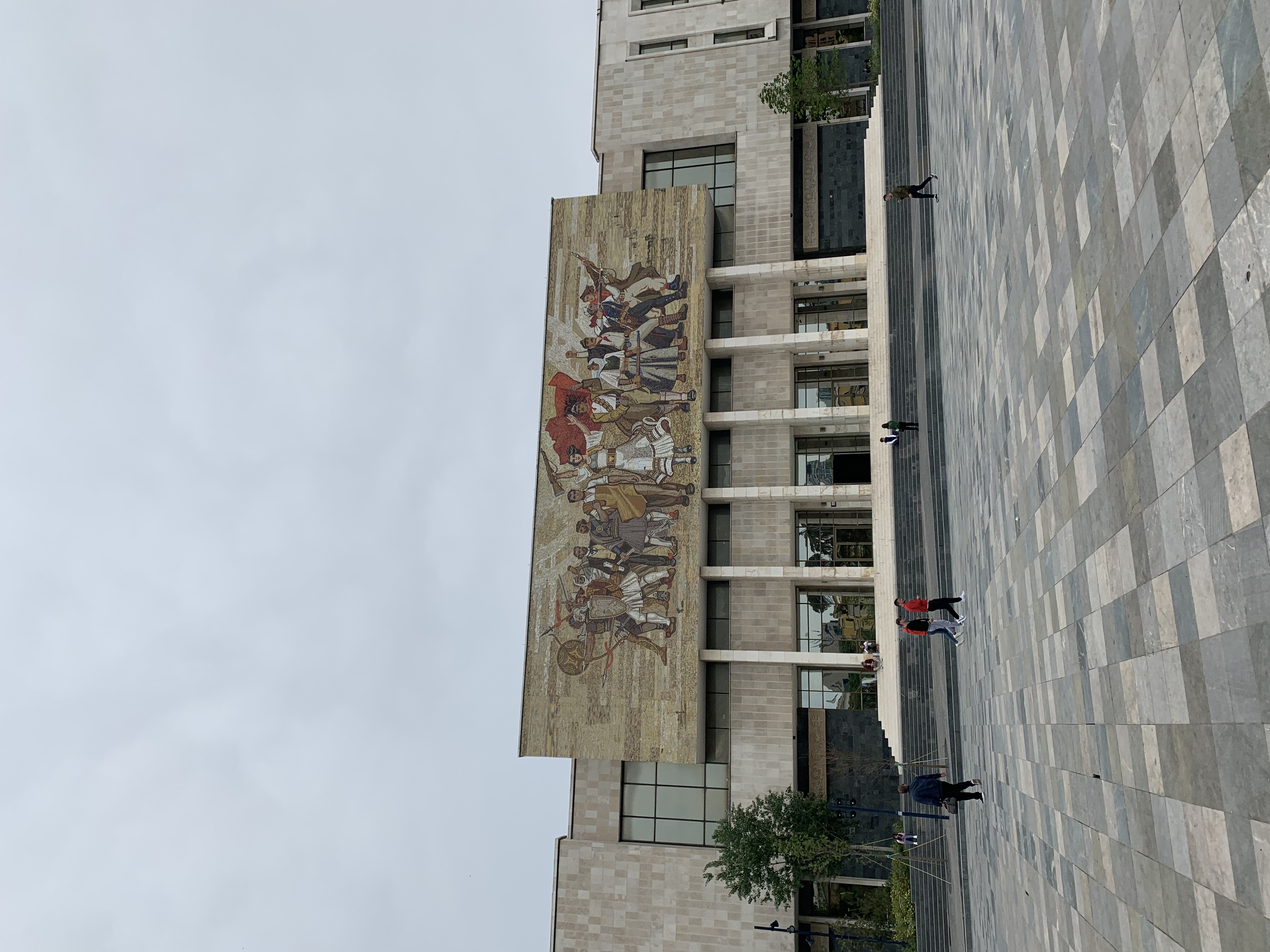
The National History Museum of Albania
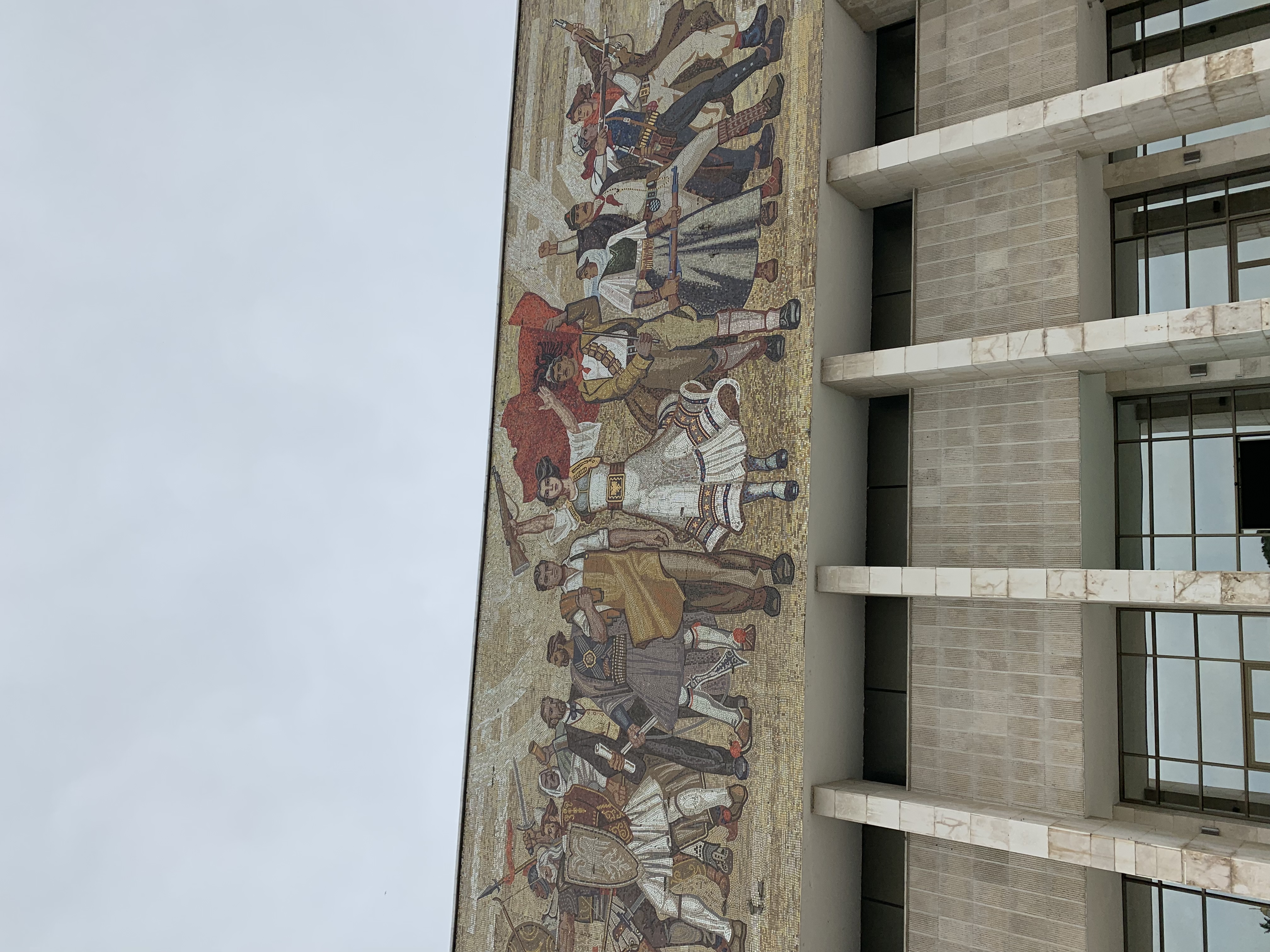
The communist mural on the front facade of the National History Museum of Albania
Bunk’Art 1
Where the National History Museum lacks in English information on the communist period, Bunk’Art 1 more than makes up for it. This museum is housed in a former anti-nuclear underground bunker. In fact, it is housed in the largest bunker in the country – one that was meant to house the former dictator Enver Hoxha and the Prime Minister in case of nuclear fall out.
This museum is located a bit out of the city, near Mount Dajti, but can be easily reached by bus. The blue Porcelan bus can be found in between the Opera and the mosque just off of Skanderbeg Square. It costs 35 lek, or about 30 cents, and takes you just a couple minutes walk from Bunk’Art 1.
Over 170,000 bunkers were built in Albania from 1967 to 1986, in a period called bunkerisation, and this one contains 106 rooms including a huge assembly hall over five floors. The bunker has now been transformed into a museum that scrupulously details life in Albania over 45 years of communism as well as displays works of art that make statements about that period of Albania’s history.

The entrance to Bunk’Art 1
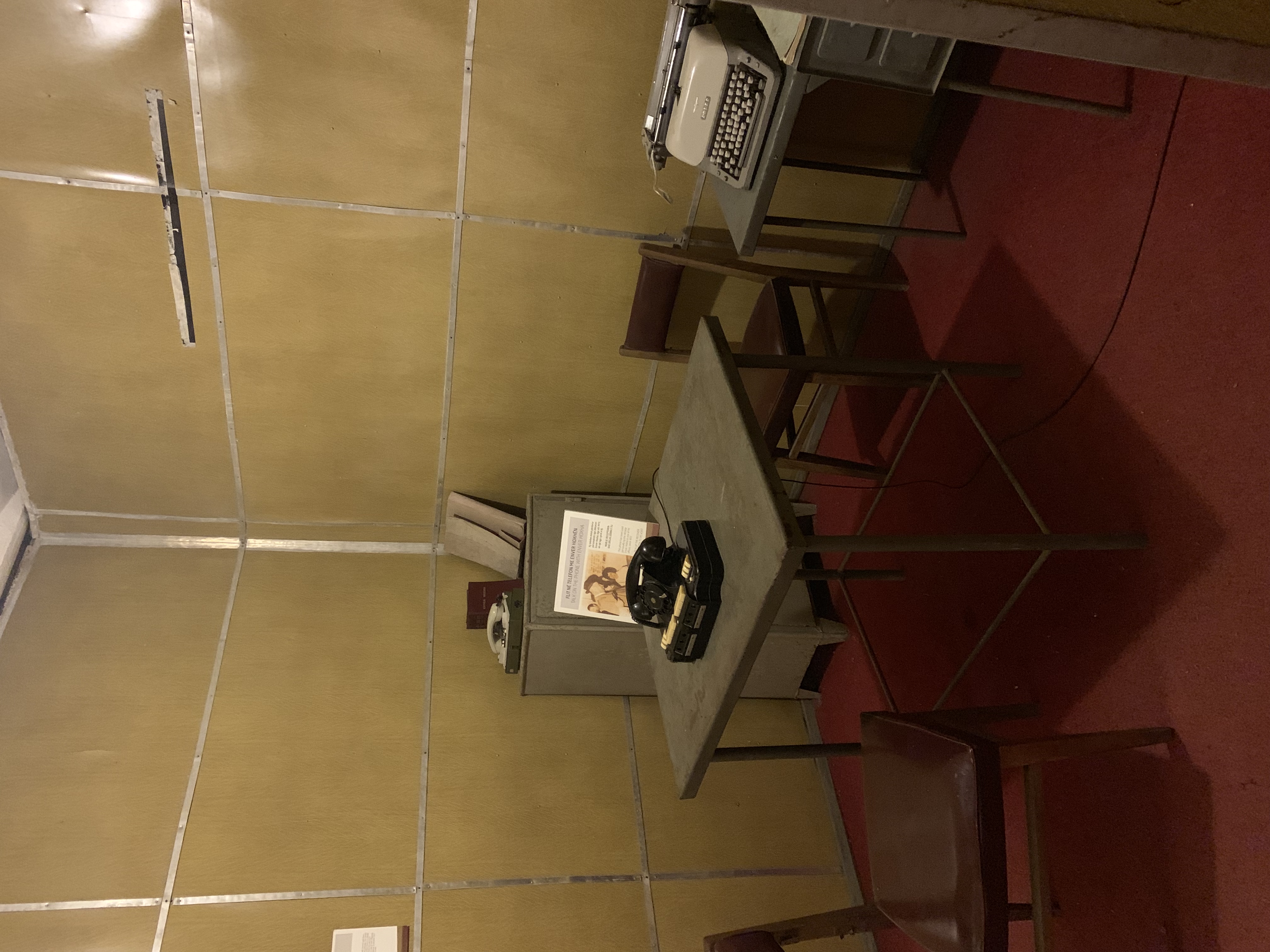
The room that would have been dictator Enver Hoxha’s office if he had had to live in the bunker

One of the fluorescent lit halls of the underground bunker
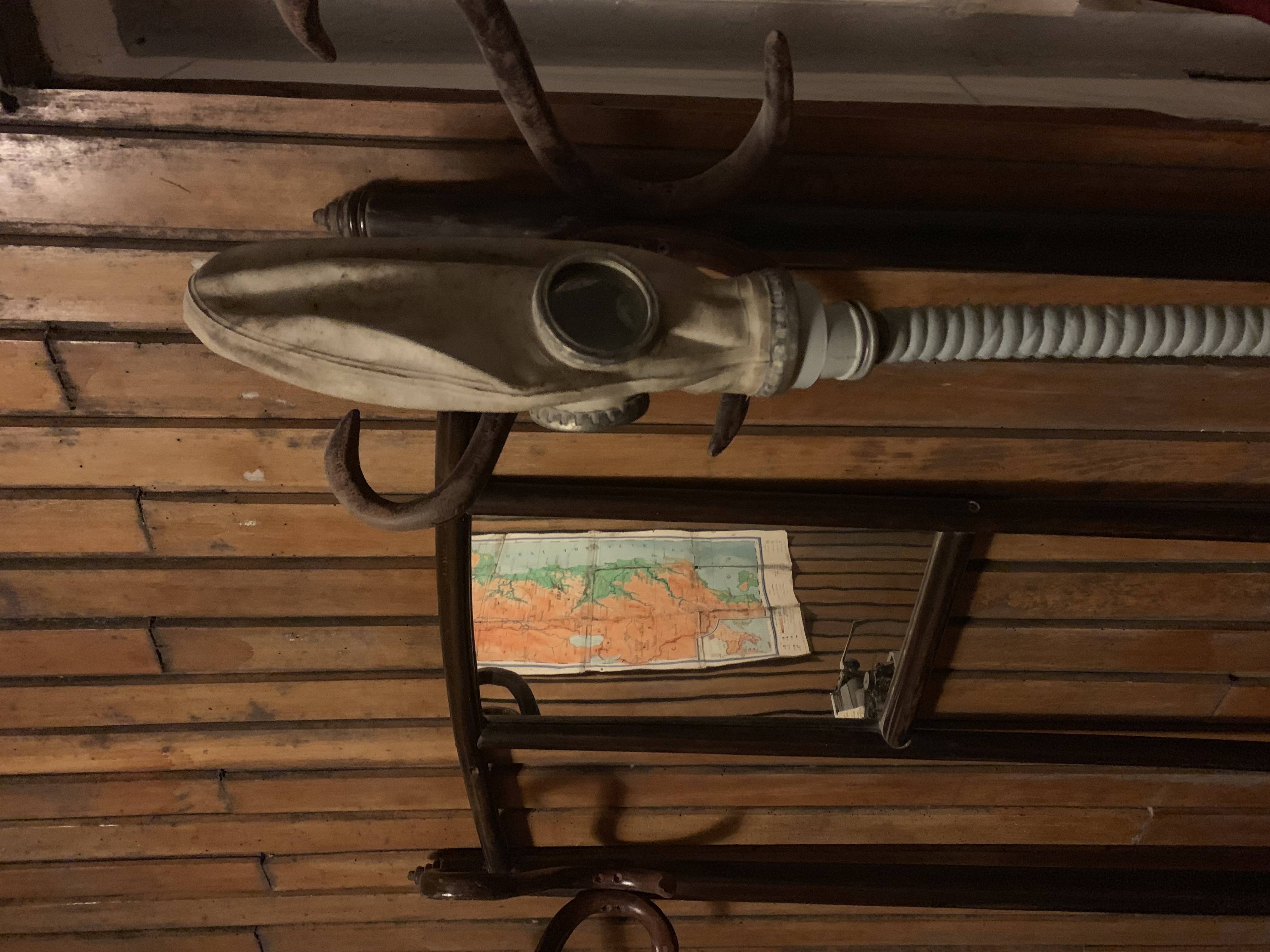
A gas mask hanging in what would have been the Prime Minister’s room

Yet another gas mask hanging in one of the halls of the bunker
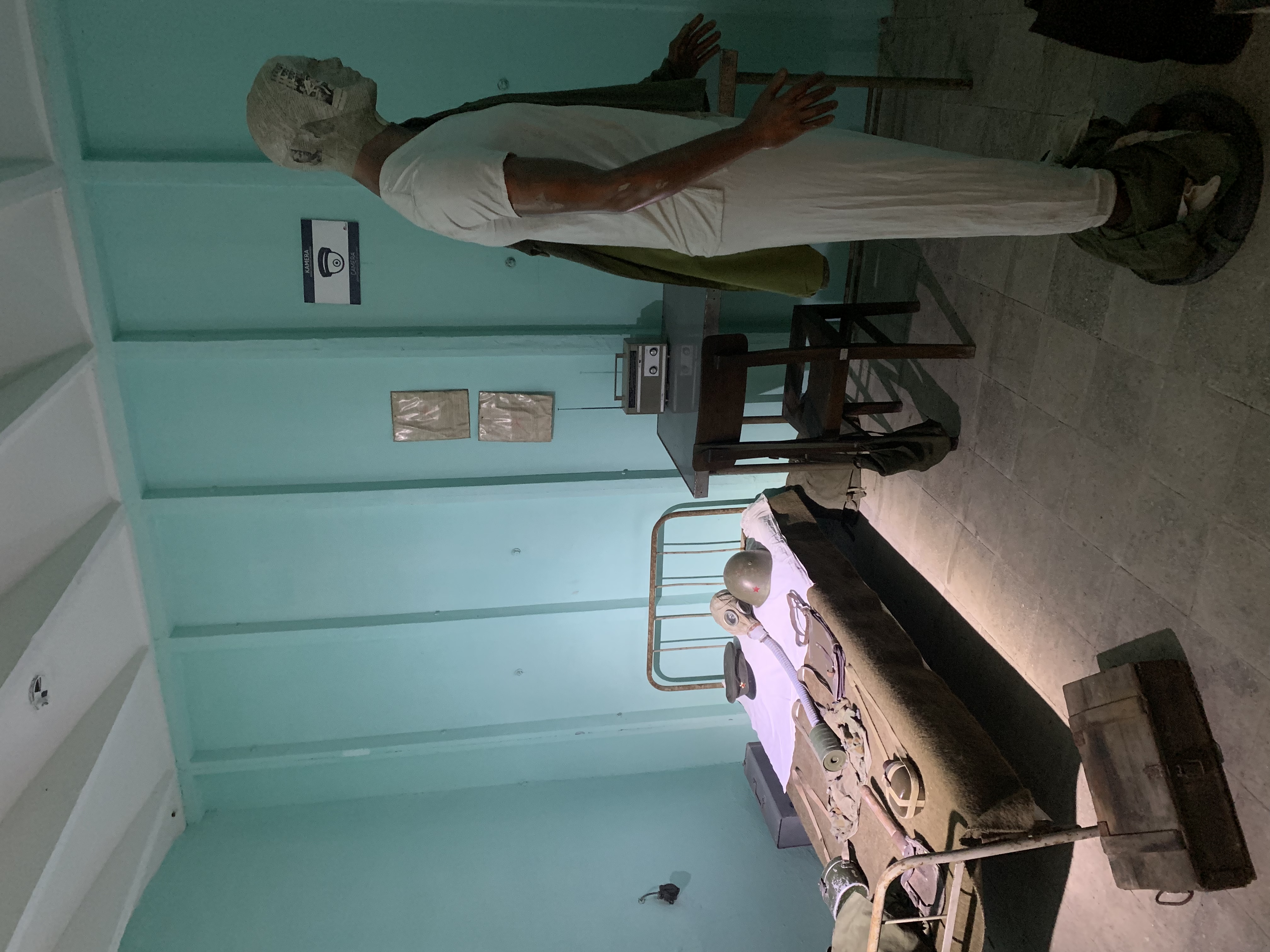
An example of what a soldier’s room in the bunker would have looked like complete with a creepy mannequin soldier.
It is super interesting and super duper creepy. Being that far underground with sound effects ringing in my ears and gas masks staring at me creeped me out big time – I basically had chills my entire time down there. But, it added to the gravity of the information being given. It is one of the coolest and best curated museums I have ever been to.
Bunk’Art 2
There’s a second Bunk’Art located right in the center of the city, just off of the main square. This one is focused on the Sigurimi, the communist state security force that caused a lot of fear and widespread distrust for decades. This museum allows visitors to learn a bit about Albania’s communist past without leaving the city.
Bunk’Art 2 is located in a bunker built between 1981 and 1986 to shelter the country’s elite police force and staff of its ministry of the interior in case of nuclear attack. Like Bunk’Art 1, this museum is very detailed and very creepy. It is worth visiting both Bunk’Arts for an in-depth look at a darkly intriguing history. Entrance to each of the Bunk’Arts is 500 lek ($4.50) for adults and 300 lek ($2.72) for students and seniors.
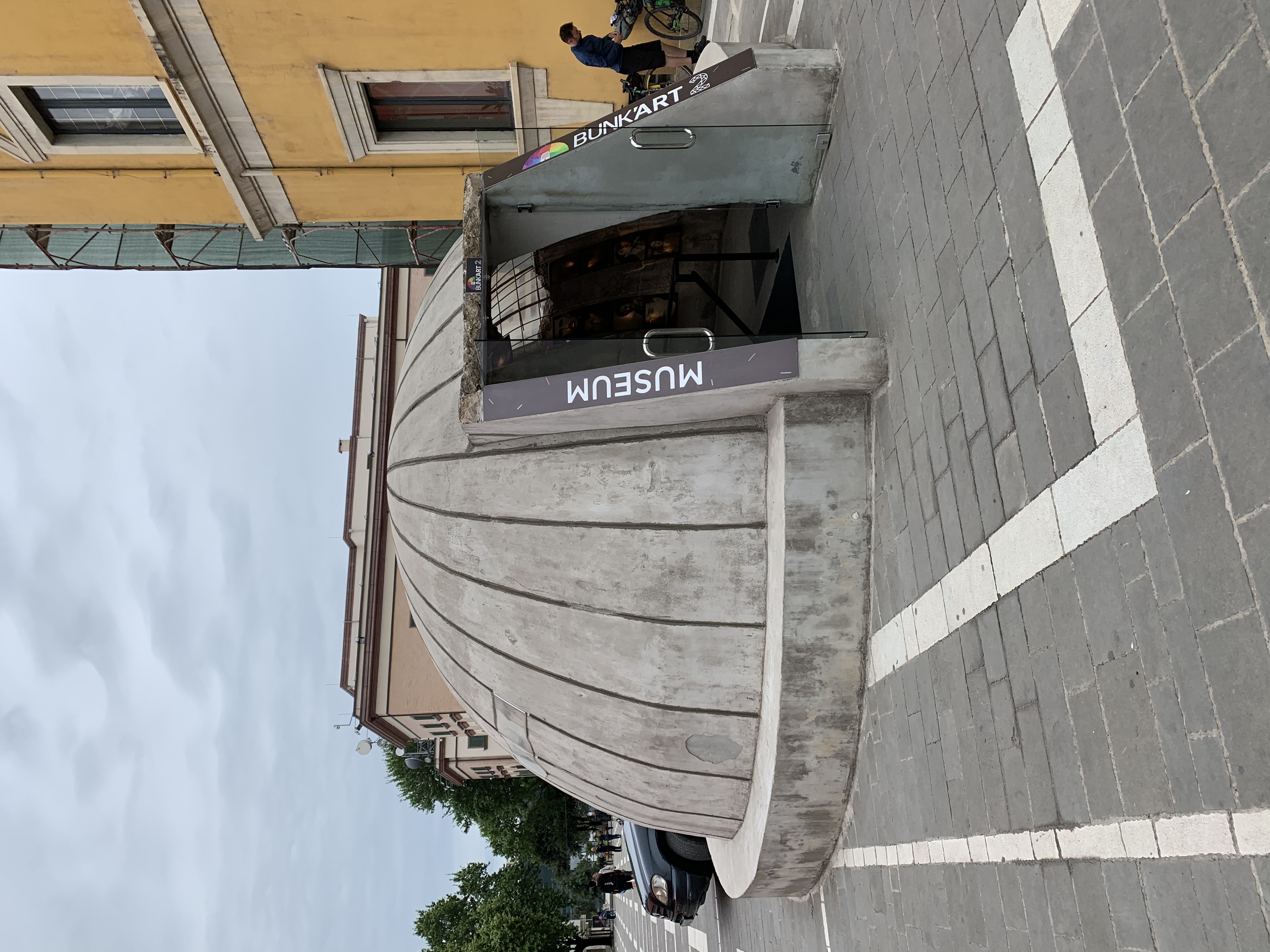
The entrance to Bunk’Art 2
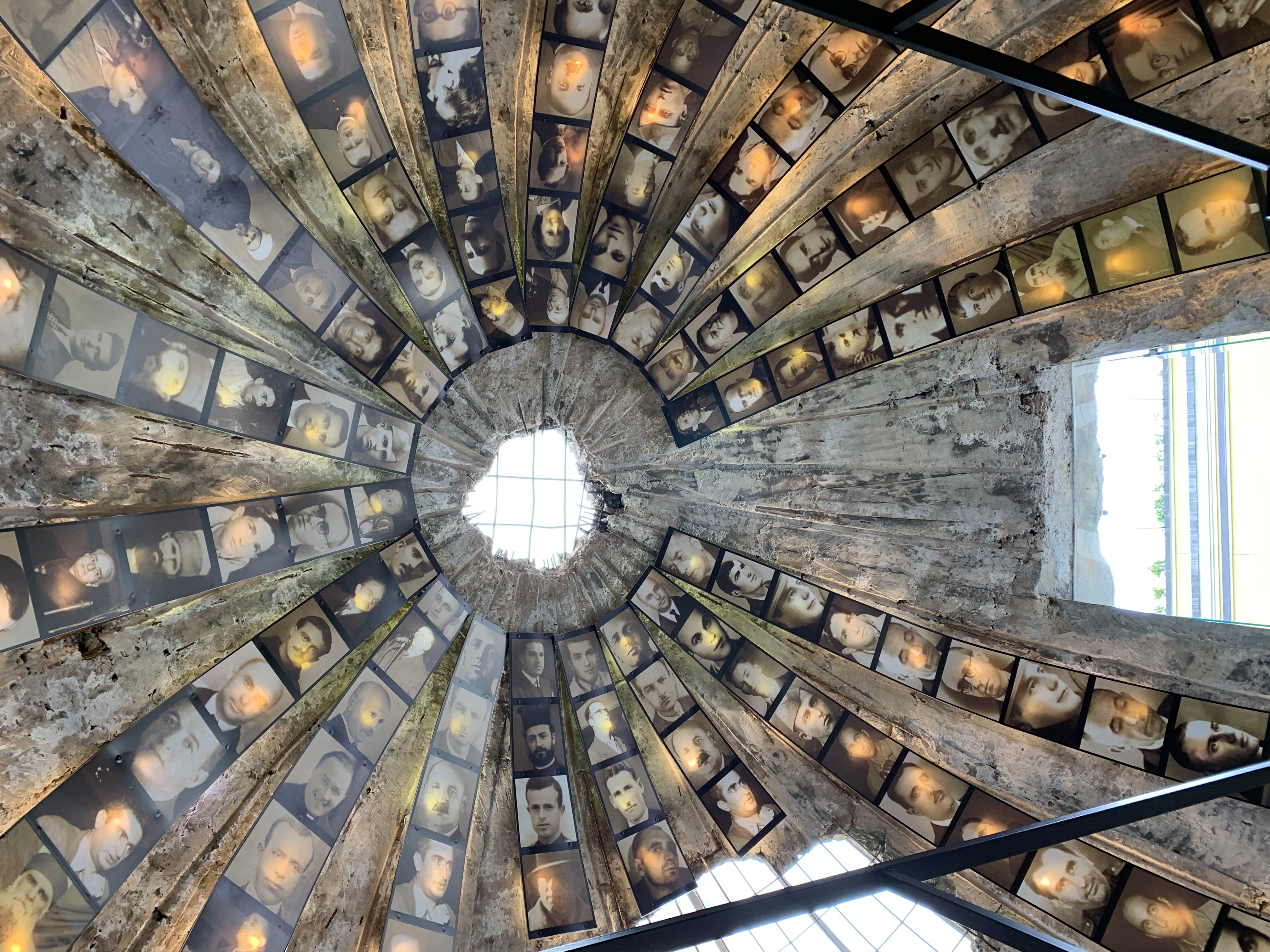
The entrance dome of Bunk’Art 2
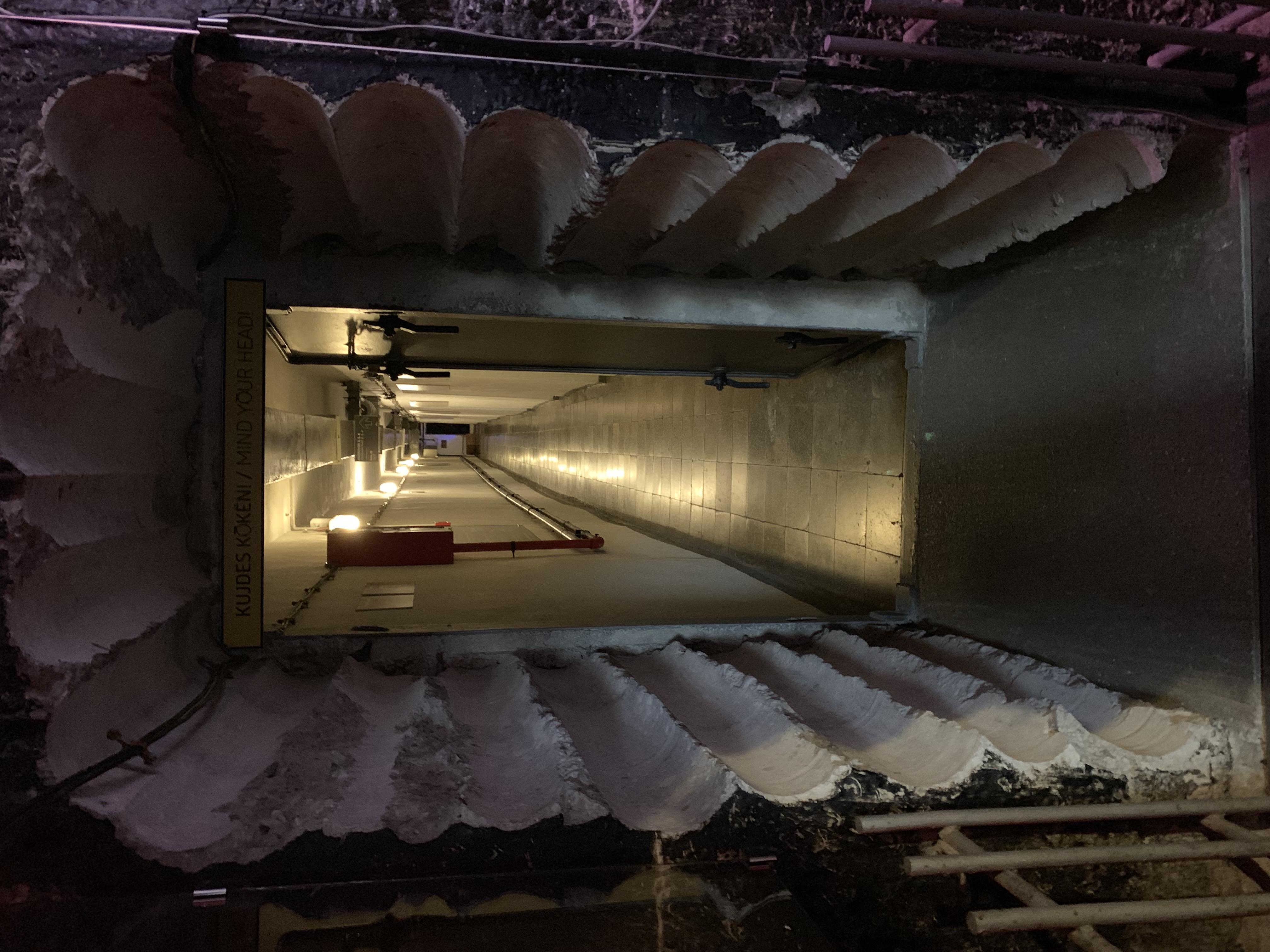
One of the hallways in the bunker of Bunk’Art 2
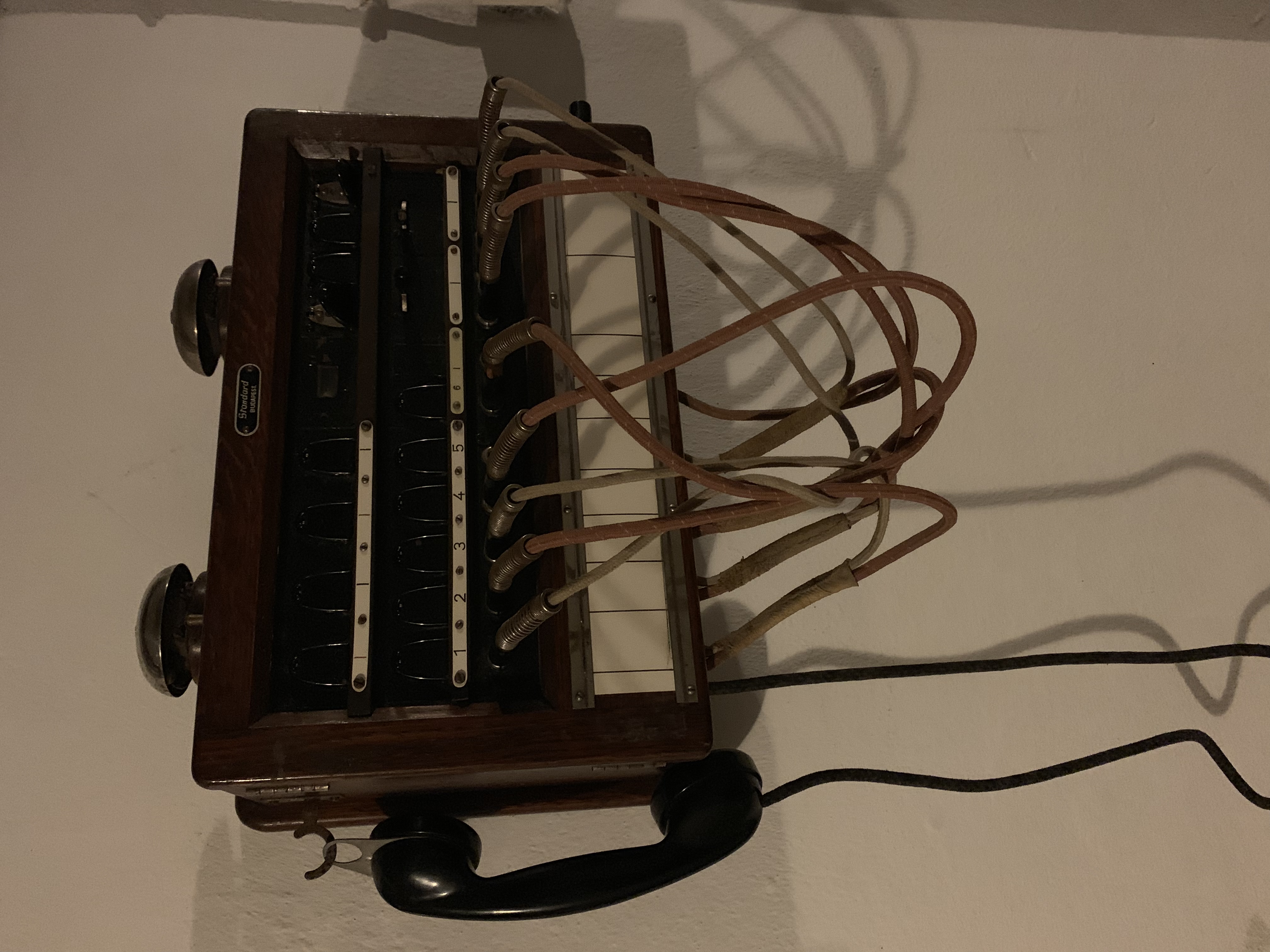
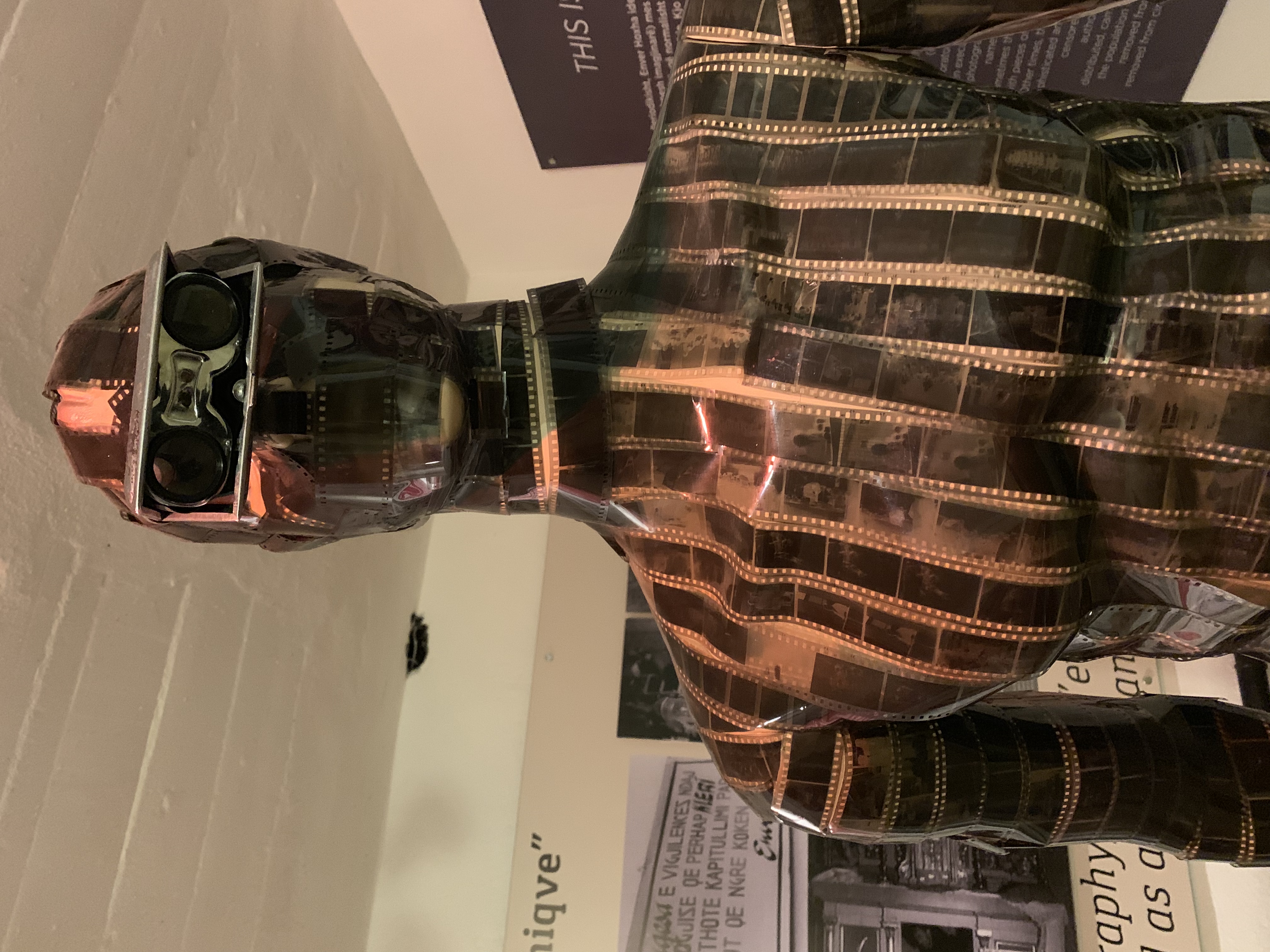
A super creepy mannequin in a room detailing photo surveillance by the Sigurimi
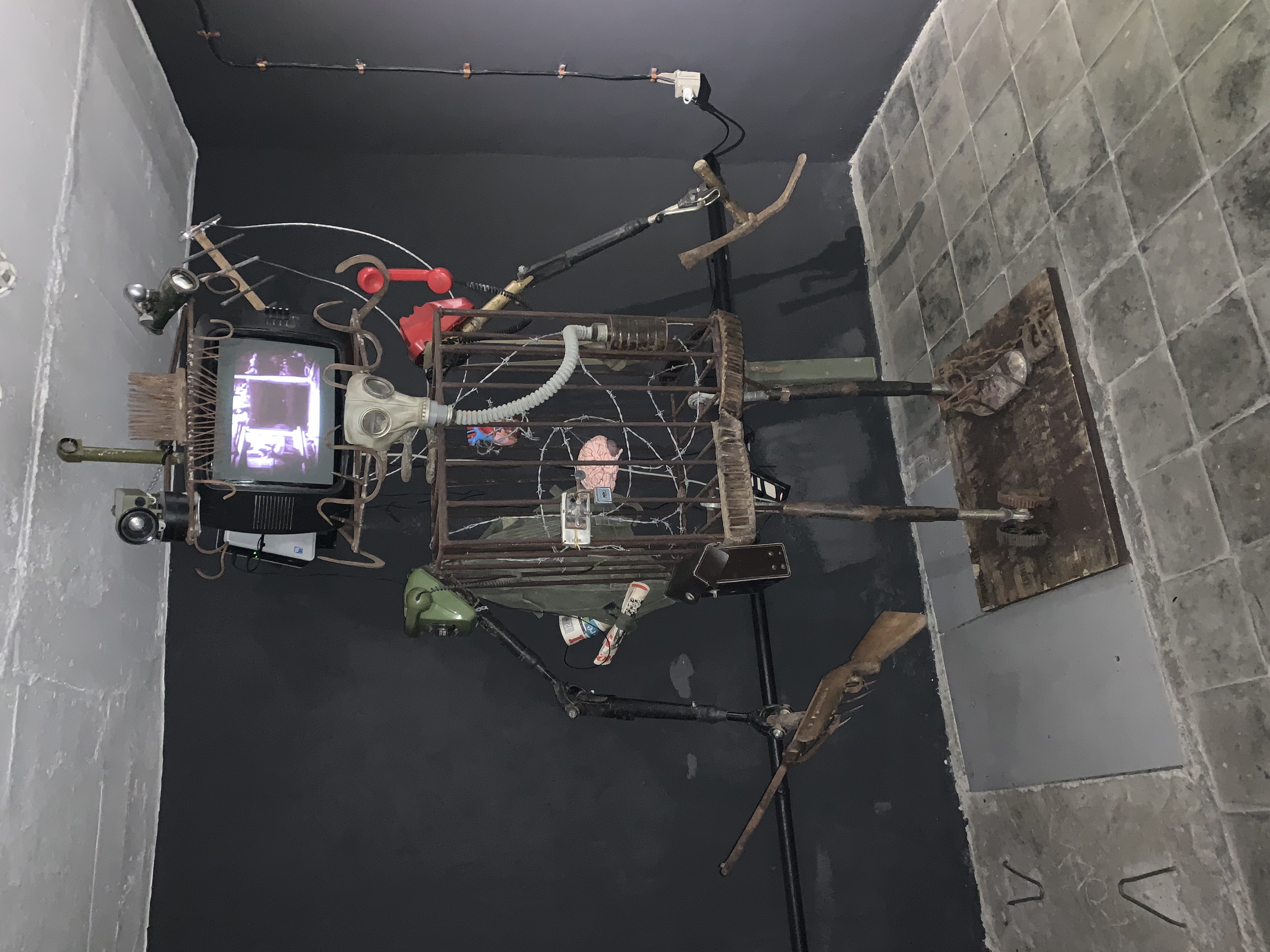
A slightly terrifying art installation at Bunk’Art 2
An Amazing Meal at Mullixhiu
Mullixhiu is one of the top-rated restaurants in Tirana, and for good reason. This is not just the best meal I had in the Balkans, it is one of the best meals I have had in all of Europe. The restaurant is pretty fancy – low lighting, multiple glasses, black tie waiters – and the menu is made with all fresh and locally sourced ingredients.
I made a reservation earlier that day, and was greeted at the door with a glass of rose juice. I was led to my beautifully set table, where I ordered a beetroot, cream, pastry, and spinach salad as well as a pasta with roasted cheese and olives and a glass of red wine (I can’t resist wine with dinner now that I have lived in Italy). These dishes may sound odd, because they were, but they were also very delicious.
- My beetroot salad before
- My beetroot salad after
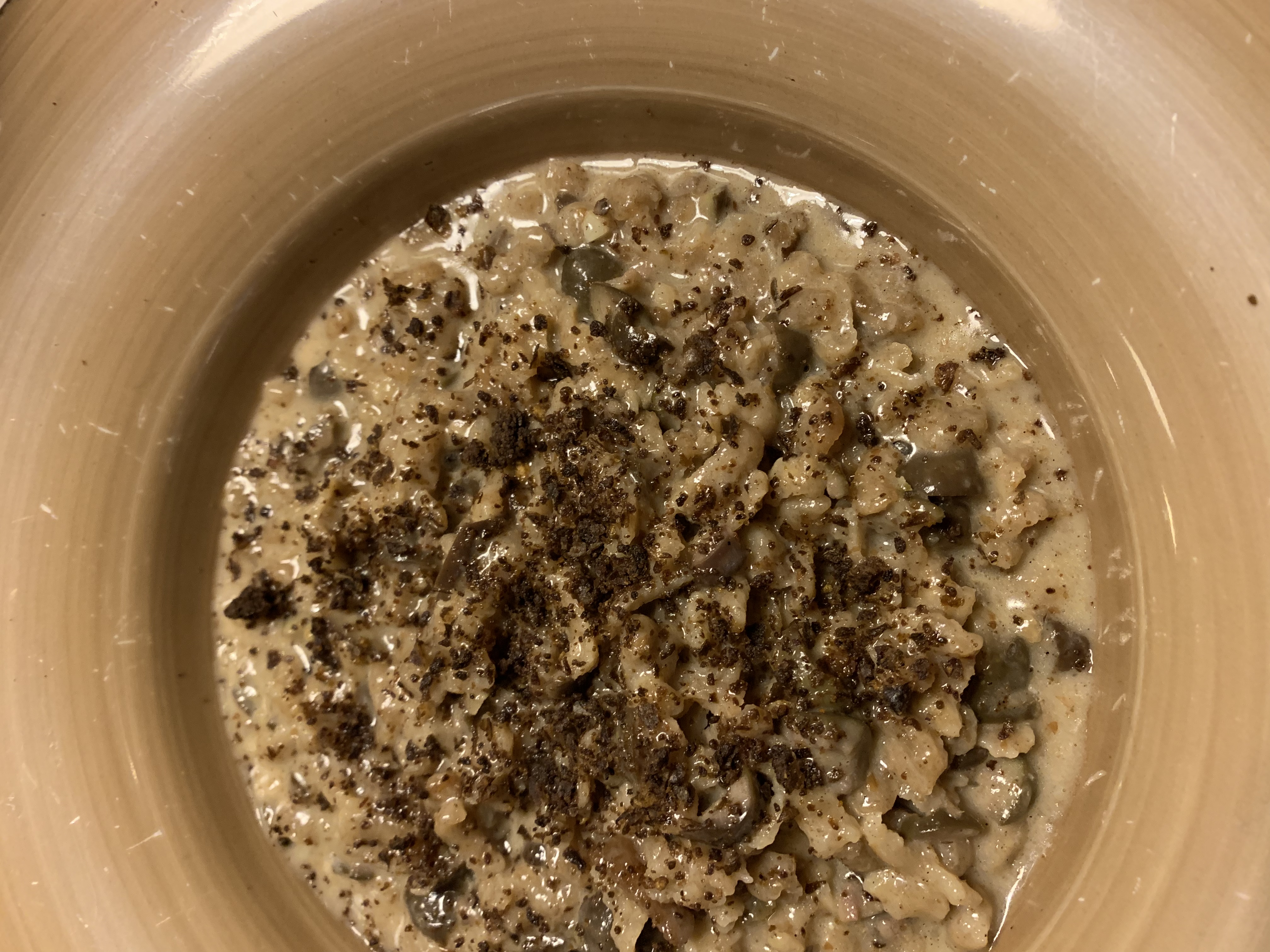
My roasted cheese and olive pasta that was more like a risotto
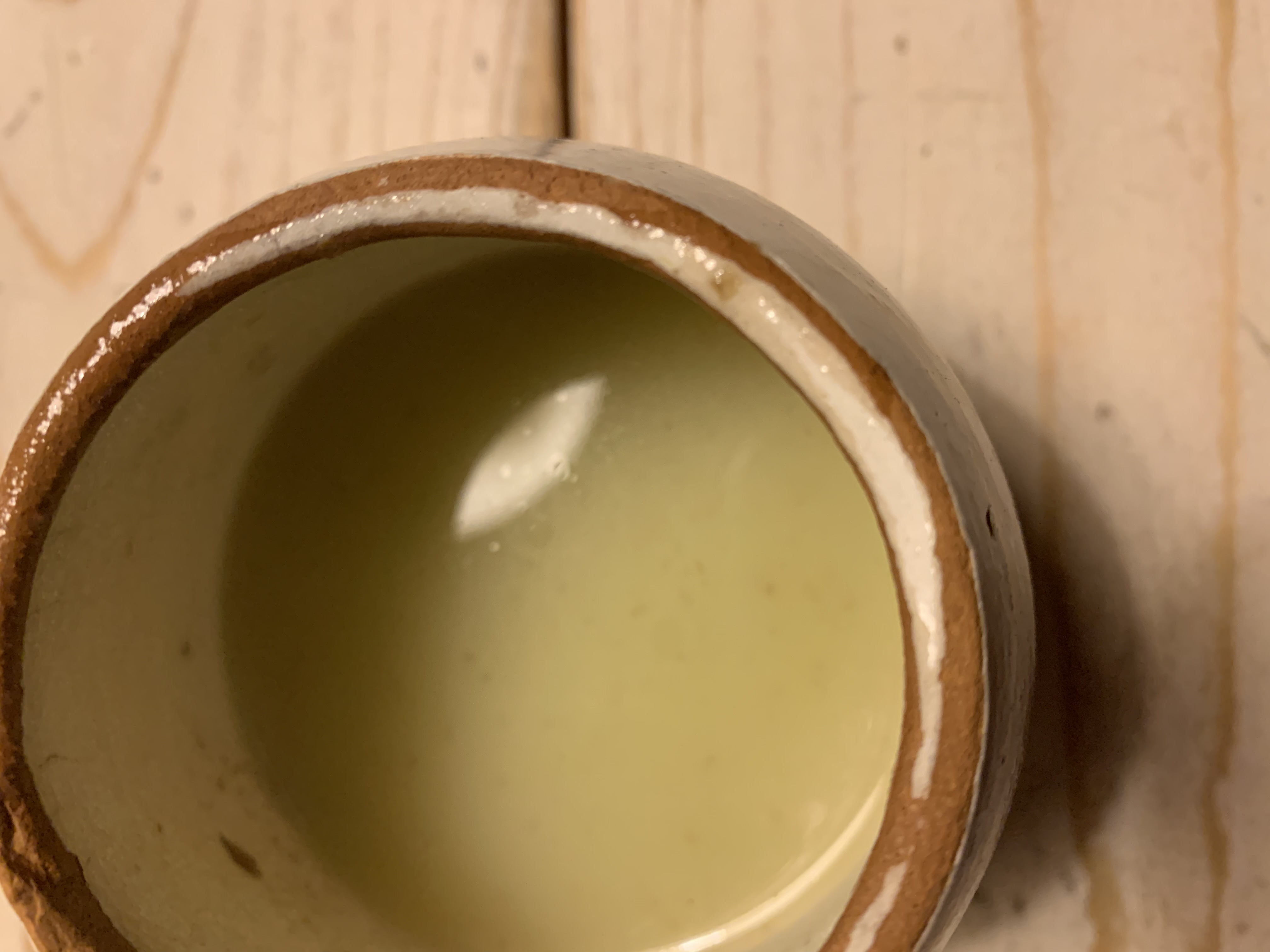
The little potato soup
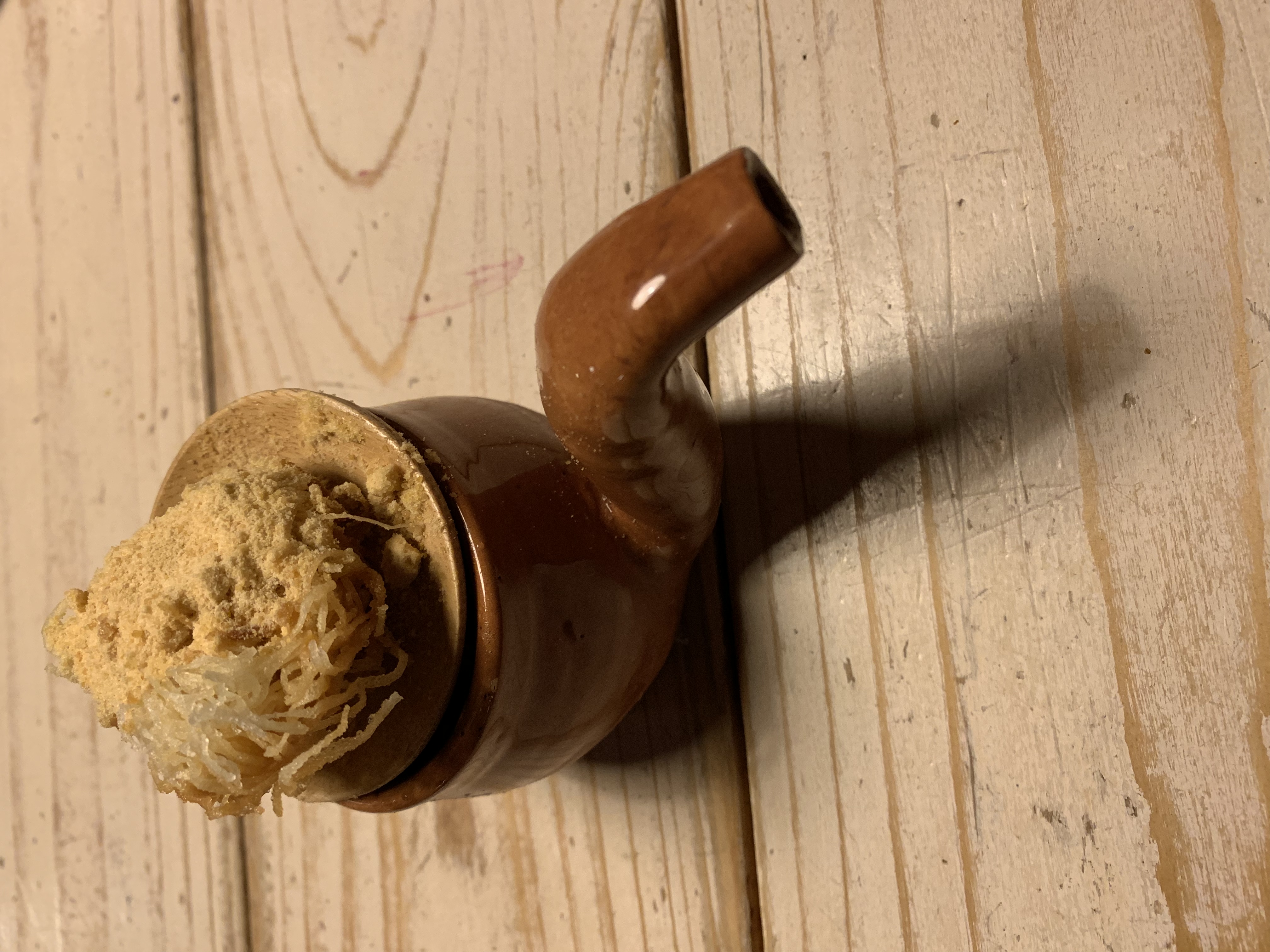
The fancy dessert served in a pipe
In addition to what I ordered, I was brought a small potato soup that I enjoyed immensely and a fancy pastry with ice cream served out a pipe that I assuredly looked goofy trying to drink out of.
Everything was superb, and I was happy to enjoy my meal over a couple of hours as Mullixhiu believes in the philosophy of slow food – that meals are meant to be enjoyed over a long and leisurely period of time. This is something that I got used to in Italy that we could better get behind in the U.S.
The best part of the meal? It all cost 1400 lek, or the equivalent of less than $13 U.S. dollars! Crazy. I was blown away that I was able to enjoy such a fancy and mouth-watering meal for so little.
The Dajti Express
The Dajti Express is a cable car that takes you up to Mount Dajti for a stunning view of the city below. A roundtrip ticket costs 1000 lek, or about $9.50. This was the most expensive thing I did in Tirana by far, but it was worth it for the longest cable car ride in the Balkans at about 20 minutes one way. I took the cable car up on a rainy day, but fortunately the clouds parted for a bit so I could get a glimpse of the city while enjoying lunch at the restaurant at the top.
I was warned off of the restaurant up there – people told me that it is pricey and the food is lackluster. However, I didn’t plan well and needed to eat something, so I ended up there for lunch. I got a really tasty baked tortellini, and it wasn’t ridiculously expensive – that dish and a Coke cost me around $6. Not bad at all and I enjoyed watching the clouds go by from my table overlooking the city.
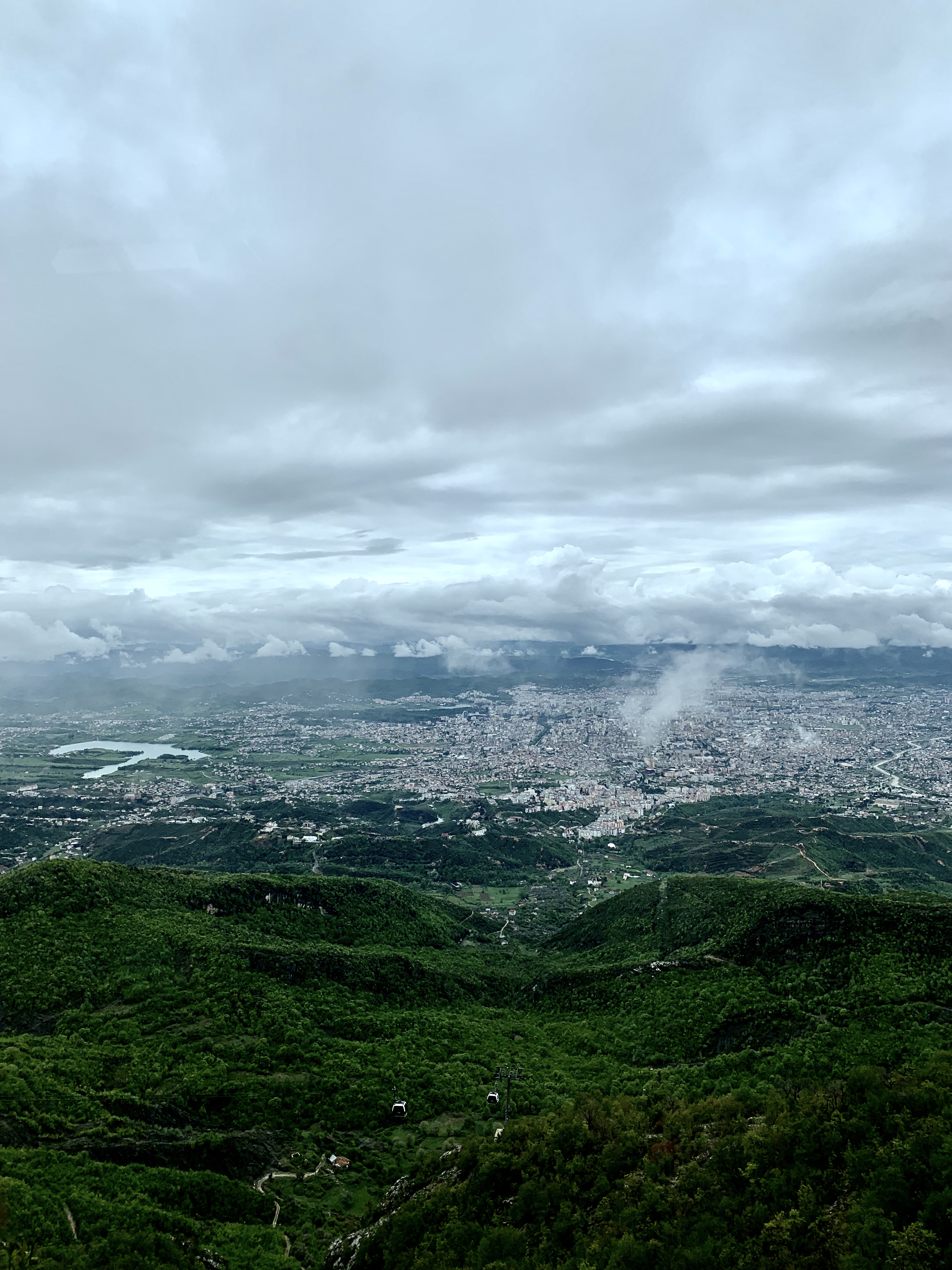
The view of the city from the restaurant at the top of Mount Dajti
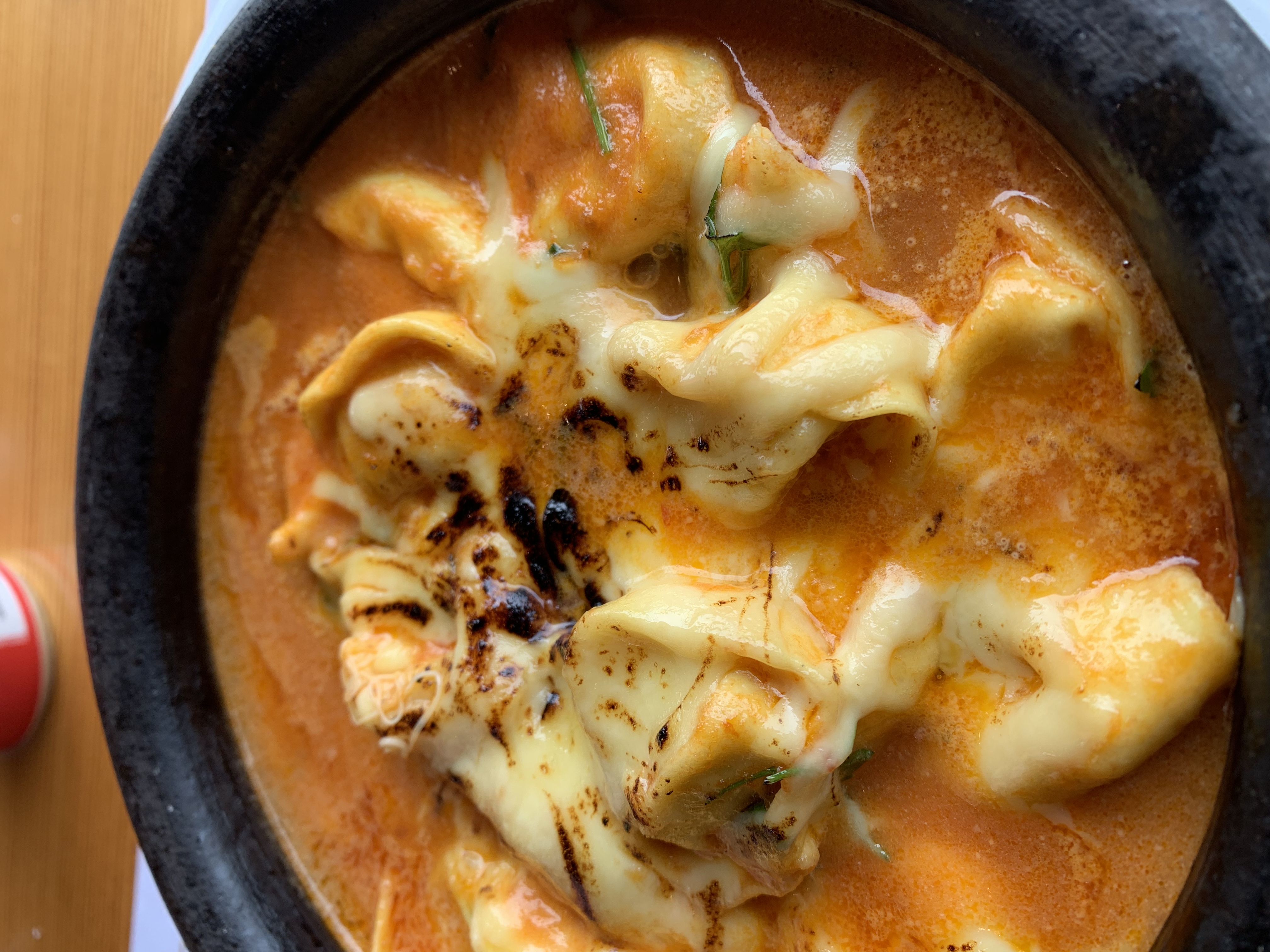
My baked tortellini at the top of Mount Dajti
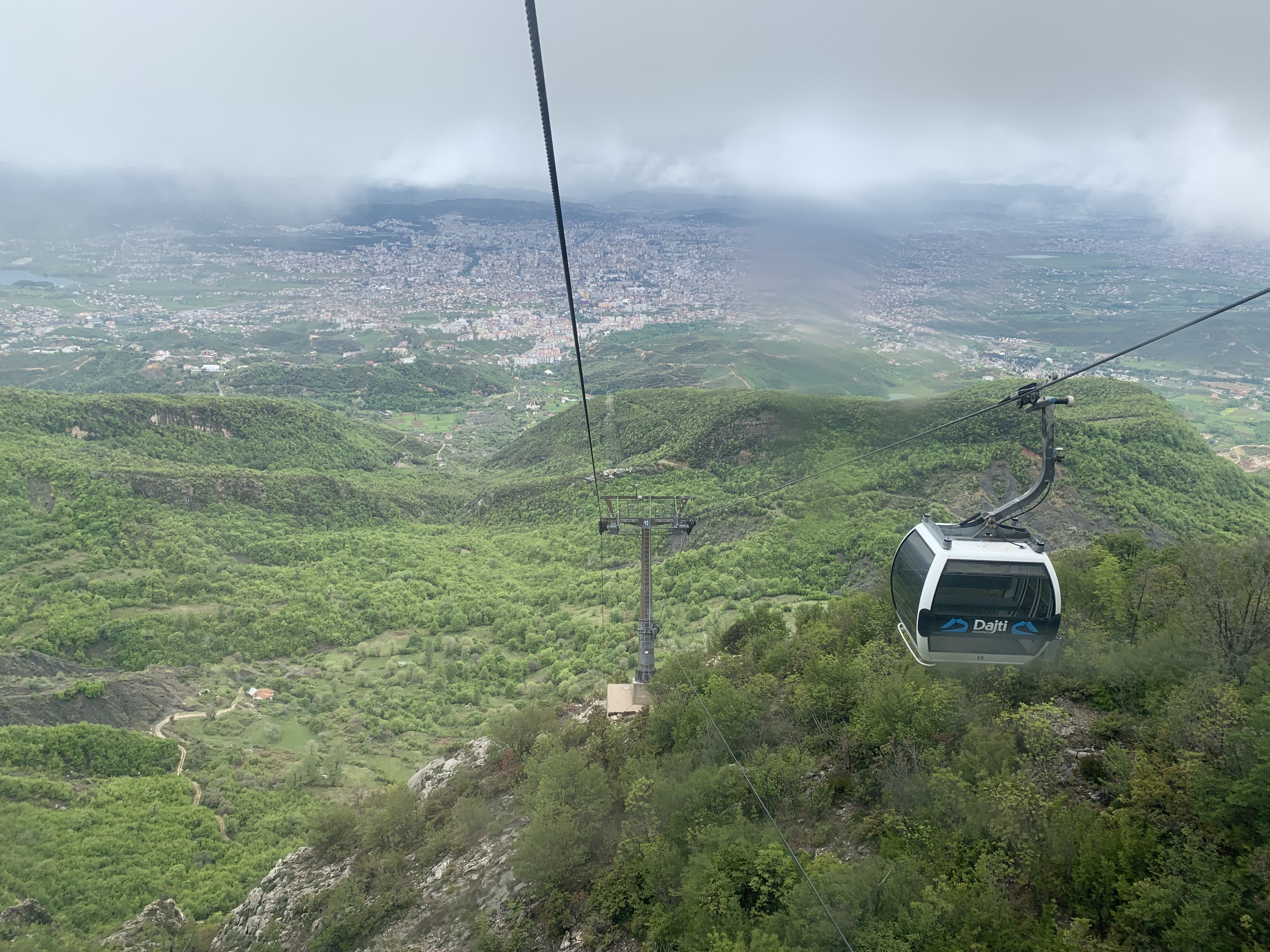
The Dajti Express going down the mountain

The Pyramid of Tirana
If you find yourself in Tirana, it is almost inevitable that you will find yourself at the Pyramid. It is Tirana’s most infamously decrepit landmark. It started off as a museum built in honor of the dictator Enver Hoxha, but after the fall of communism it became deserted. Since then it has served as a night club, a NATO base during the Kosovo war, and a broadcast center.
It now stands empty, but there are apparently talks of making it into a youth IT center complete with new glass installations for natural light and staircases along its sides. Until then, it will probably continue to draw children and tourists like me that want to climb it. My tour guide mentioned in passing that it could be climbed, and I immediately made plans to do so.
After my walking tour, I grabbed some burek (a traditional Balkan pastry) for lunch and took it with me up one of the sides of the pyramid. I will say, that thing is pretty steep. I basically scaled that thing in a bear crawl, trying to find purchase in my converse that turned out to be horrible shoes to scale a pyramid in. But, I made it up without too much trouble and enjoyed my lunch from above with a nice view of the city.
It got really fun when it came time to get down. I basically got in crab walk position and slid down the pyramid on my butt, using my hands and feet to slow my descent.
It was so much fun. I almost wanted to climb it again just so I could slide down a second time, but I restrained myself.
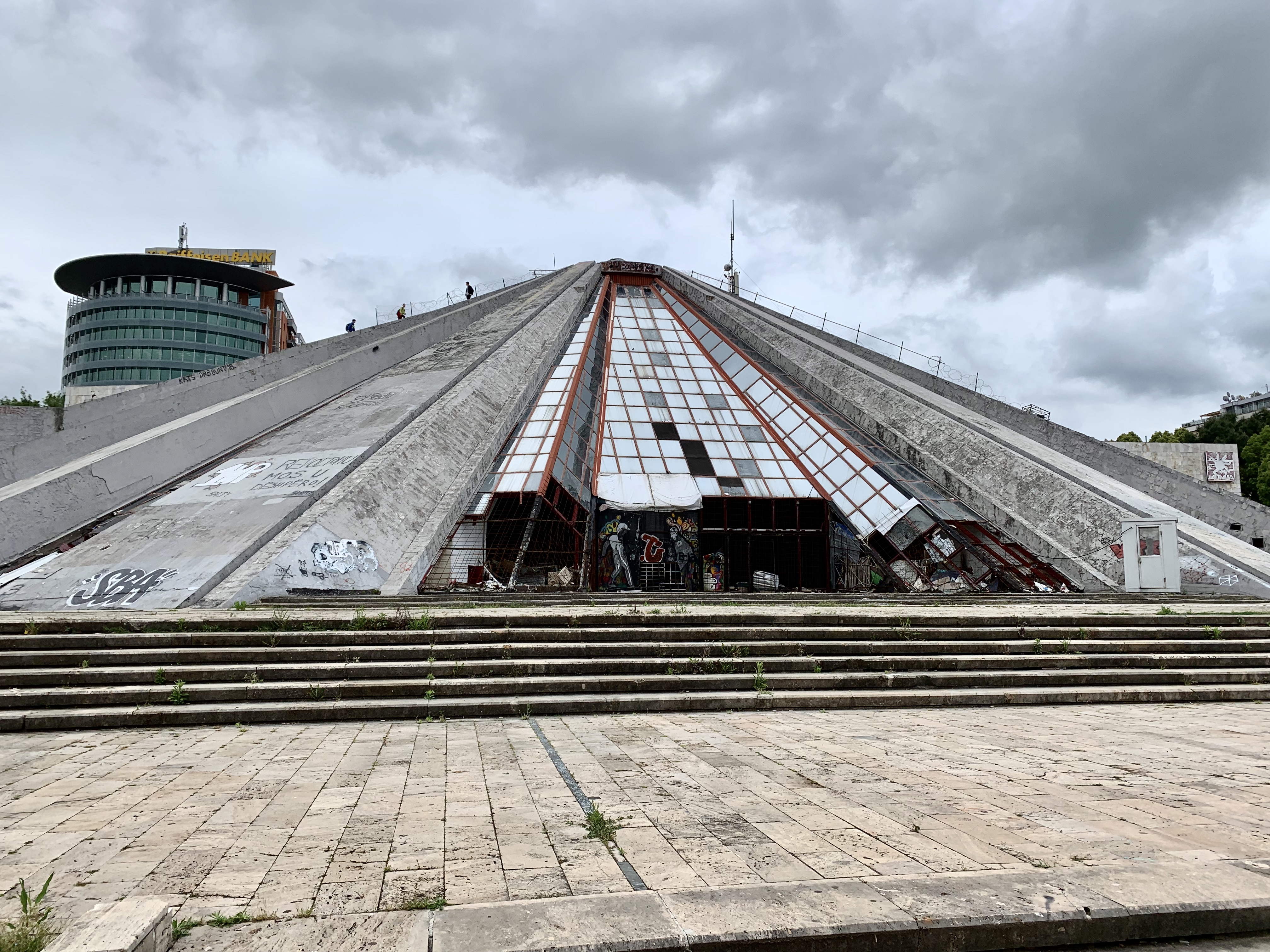
The Pyramid of Tirana
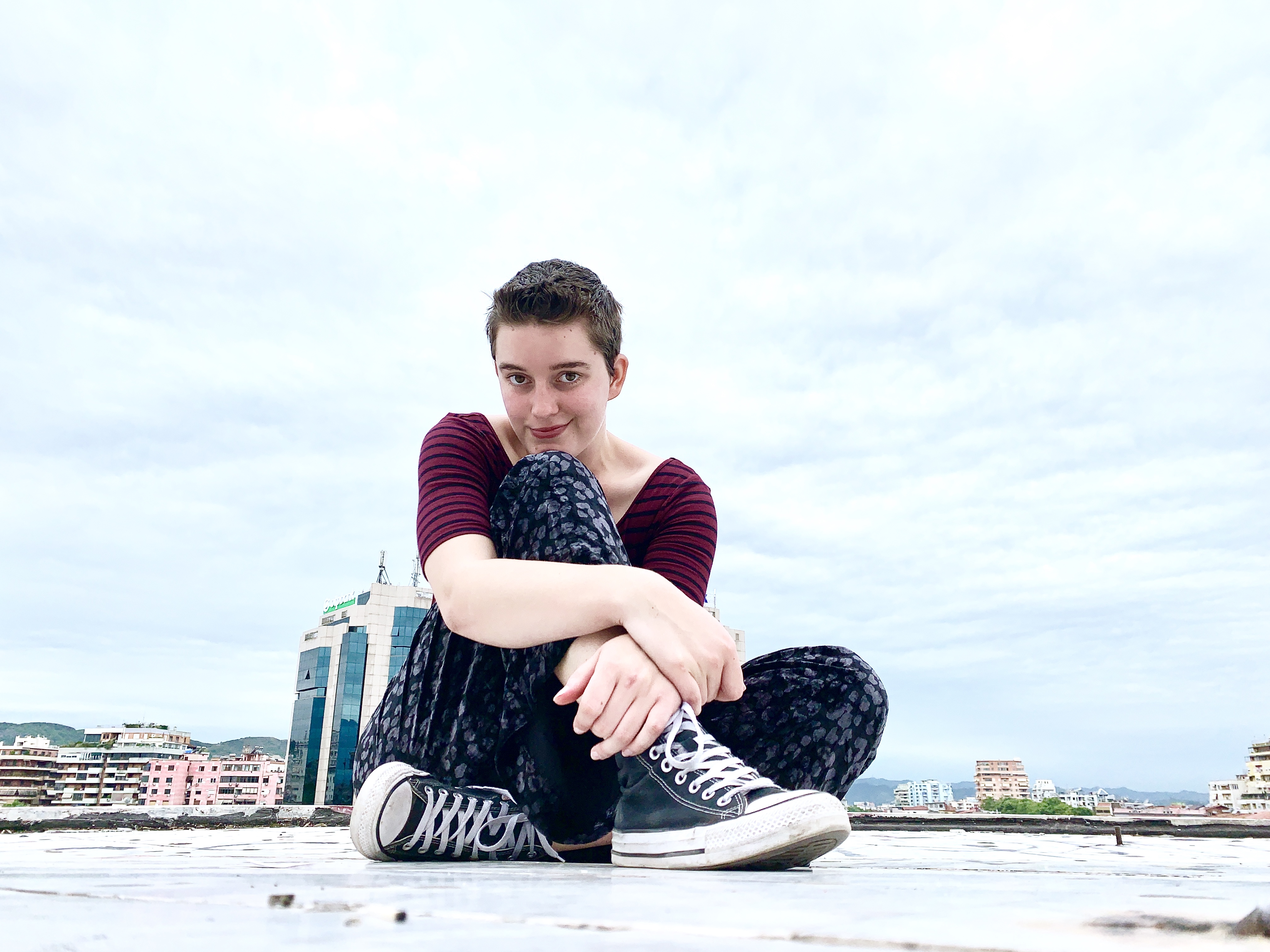
Sitting at the top of the pyramid

The graffitied dome at the top of the pyramid

Preparing to slide down the side of the pyramid
All in all, Tirana spoke to the artist and history buff in me – I found myself delighted by the colorful art that was an integral part of the city and darkly fascinated with the recent past of Albania that was so well represented in the city’s out of the box museums. I can definitely see Tirana being high up on lists of travel destinations in the coming years. It drew me in quickly, becoming one of my favorite stops that I made throughout the Balkans, and I can easily see other travel buffs becoming similarly enamored of Tirana’s capital.

